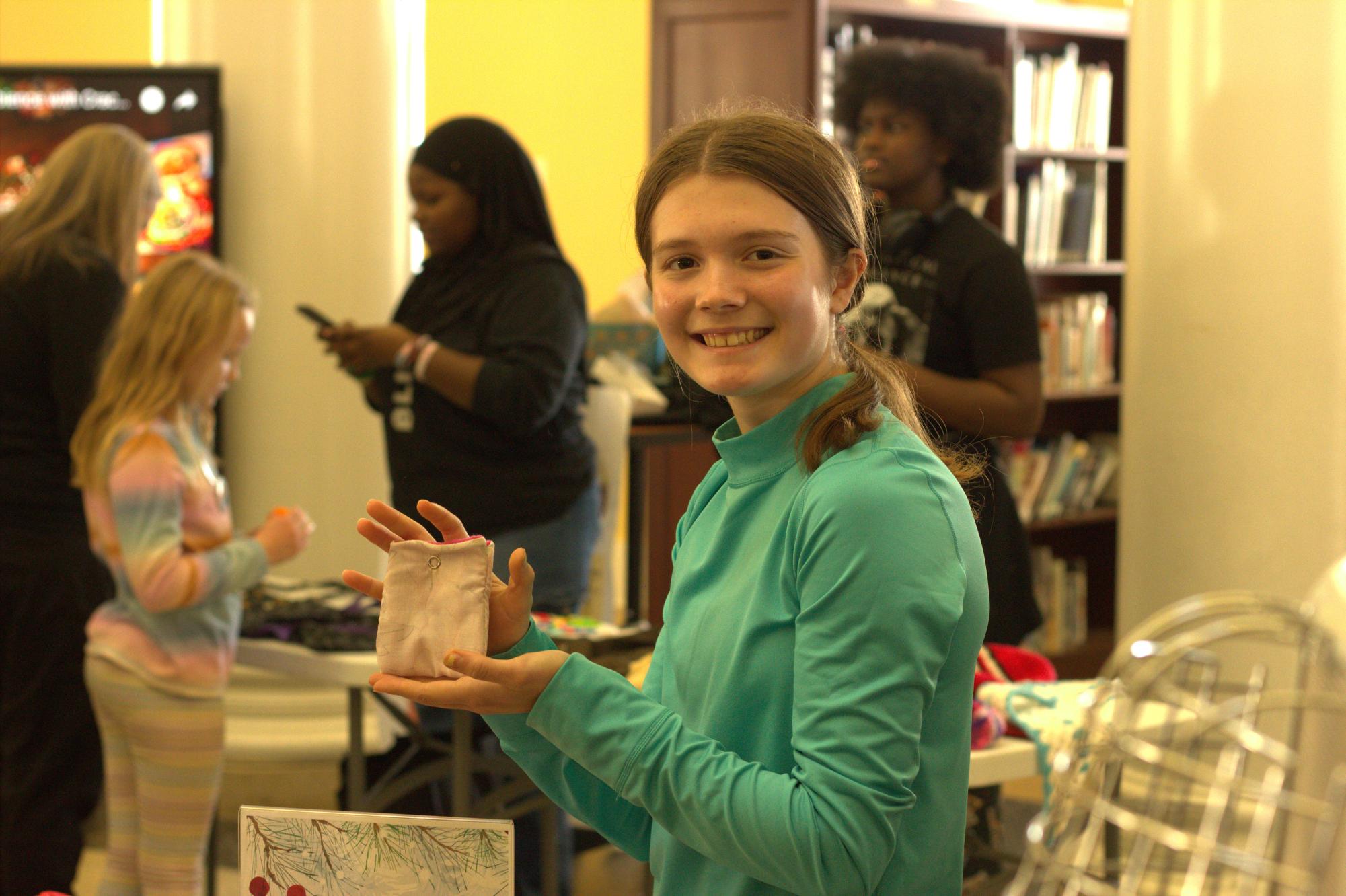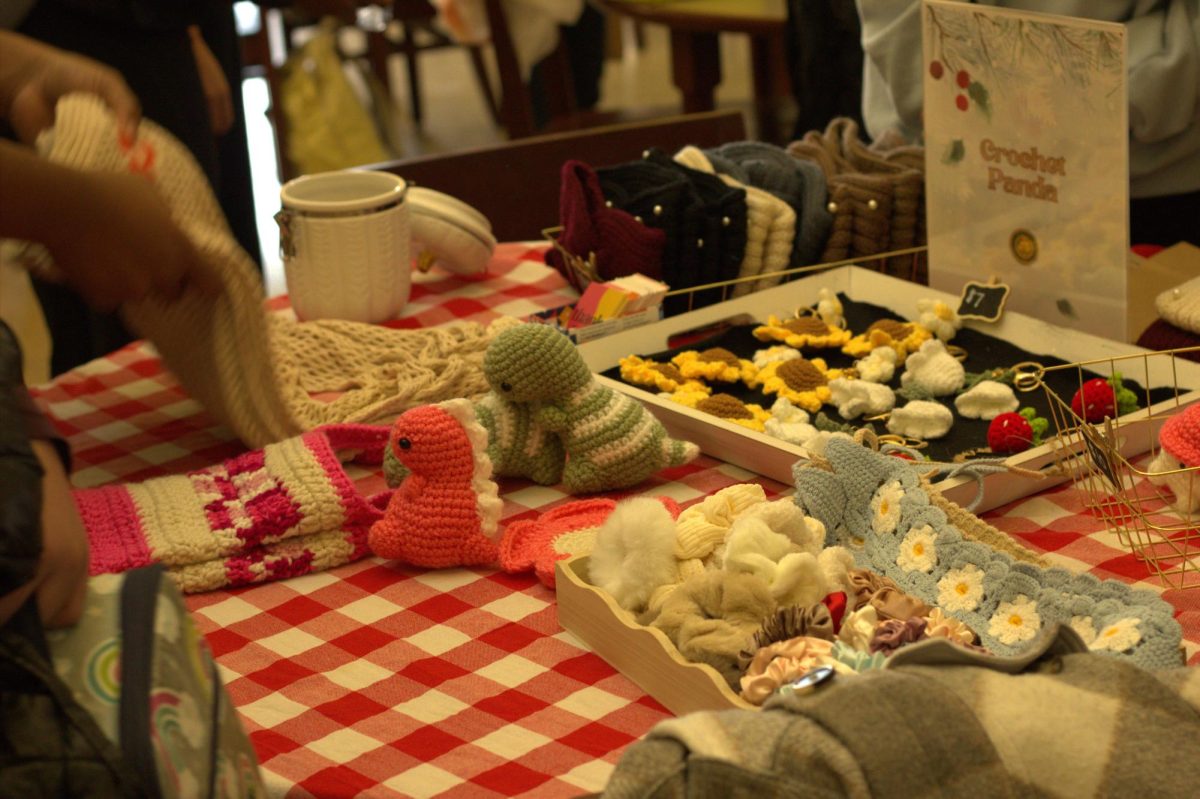From crochet headphone accessories, scrunchies and bags to jewelry and baked goods, the Maker Fair on Dec. 8 featured all sorts of products created by 16 different student vendors.
Diabou Fall, ‘24, and her partner Aida Doumbi, ‘24, started a business called Sewchet in 2021, sewing and crocheting a variety of fabric items such as bags, hats and stuffed animals.
“I really wanted to hone in on my skills and I thought a good way to do that was for me to start a business so I can let other people know about what I’m doing and get more publicity.”
Fall feels that the Maker Fair is useful to attain publicity for their business.
“It’s a really smart idea, especially when there’s a lot of students at this school who have really good skills and they have small businesses that they need to get the word out about,” Fall said.
To prepare for the Maker Fair, Fall and Doumbi carefully choose which products to sell.
“We made sure to make extras of our best-selling items, like our denim bags and our crocheted bees,” Fall said.
The Maker Fair had a positive effect on Fall’s and Doumbi’s business. Along with many sales, Diabou and Fall received multiple online orders the next day.
“A lot of people bought an item and made up their minds really quickly,” Fall said. “Almost everyone who came to our booth bought something, and if they didn’t, they took the free stickers.”
Fall was not only a producer but a consumer in the Maker Fair too.
“I end[ed] up trading some of our items for some of their items of the same value,” Fall said. “I love trading skills because it’s so fun and mutually beneficial. I got a pin and traded that for a key chain.”
Fall also attended last year’s Maker Fair and noticed differences between last year and this year.
“This year was a lot more organized and a lot more people knew about it,” Fall said. “I think it was less nerve-wracking because we knew people were gonna come.”
Fall would like to go to the Maker Fair again next year as a seller or a customer.
“I would love to go again because it’s a great way to get publicity,” Fall said. “Even if I wasn’t selling anything, I’d still go because there are amazing items I’d love to buy.”
The only thing Fall would change is for there to be more room.
“I would only hope for more space because it got packed very quickly and there wasn’t a lot of space to move around,” Fall said.
Margo Fisher-Bellman was one of the WHHS librarians who made the Maker Fair possible. Fisher-Bellman thinks the Maker Fair allows students to explore their interests in a real-world setting.

“[There is the] social-emotional piece, [to] have the confidence to advertise your business and represent your business,” Fisher-Bellman said. “But then there’s also the piece of running the business, so you have that mathematical piece, how much the [product] costs, why that cost matters, all that sort of thing.”
Fisher-Bellman, like many others, also bought products from the Maker Fair.
“I bought some food, I bought some crafts for my kid’s stockings [and] some jewelry,” Fisher-Bellman said.
Fisher-Bellman’s favorite thing about the Maker Fair is seeing kids with their interests. She believes that people showing their interests with the Maker Fair is ‘a much greater indication of future success.’
“It allows kids to advertise what they do. I think it’s a really great learning experience…it’s a very real-world application of many different types of skills,” Fisher-Bellman said.



